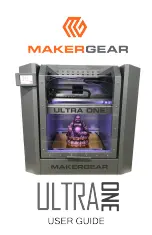
Specifications 153
_____________________________________________________________________________________________
_______________________________________________________________________________________________
MICROPLEX
Operator’s Manual SOLID 50 A3 - 3
Edition 2.1
Costs per Page for MICROPLEX Print Systems
The term "costs per page" is the most frequently used one in connection with the purchase of a printer.
Nevertheless this term is the one with the biggest lack of definition.
The distributors normally attach great importance to having small values for the costs per page. The user
normally wants to have a value that is as realistic as possible.
There isn’t any generally valid rule to calculate the costs per page. Therefore values given by different
manufacturers are very often not comparable.
The values given by MICROPLEX are based on the utilization time of the so-called consumables of the
printer. There isn’t any generally valid rule for this calculation, either. Therefore MICROPLEX has fixed
the definition of consumables as follows:
1. Consumables
Consumables are parts or substances which the user can exchange or
refill without tools.
MICROPLEX understands by this definition that the user can decide by
visible criteria when he should exchange or refill consumables. The
working steps can be done by the user in accordance with the manual
without the usage of tools.
Consumables can be different depending on the printer type.
The most important consumable for example is
toner
.
Usually the utilization time of these materials is given as a number of pages (DIN A4). These values often
refer to the print density (3%, 4%, or 5%) which is given as an application specific parameter.
Usually a value of 5% print density is defined, very seldom is 4% used.
In the case of a low print density (e.g. 3%) the utilization time increases, in the case of a high print
density (e.g. 10%) the utilization time is decreased.
Therefore the utilization time is strongly dependant upon the application.
Experience proves that in professional applications a print density of higher than 5% is usually reached.
For a delivery note containing a form and some bar codes a print density of 8 - 10% is quite normal.
There are further parts that must be exchanged in addition to the consumables during the life time of a
print system. MICROPLEX divides these additional parts into two categories:
2. Application specific wearing materials
Application specific wearing materials are parts which have to be
exchanged by a service engineer or a trained operator. The criterias for
the exchange aren’t always easily recognizable for a user. Some of the
criterias require measuring techniques or the experience of a service
engineer or operator.
In a normal application, parts of this category are:
- fuser unit
- process unit (drum, OPC)
- ozone filter





































